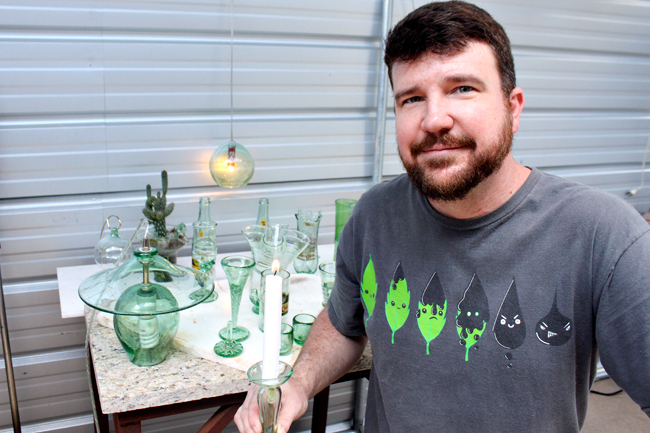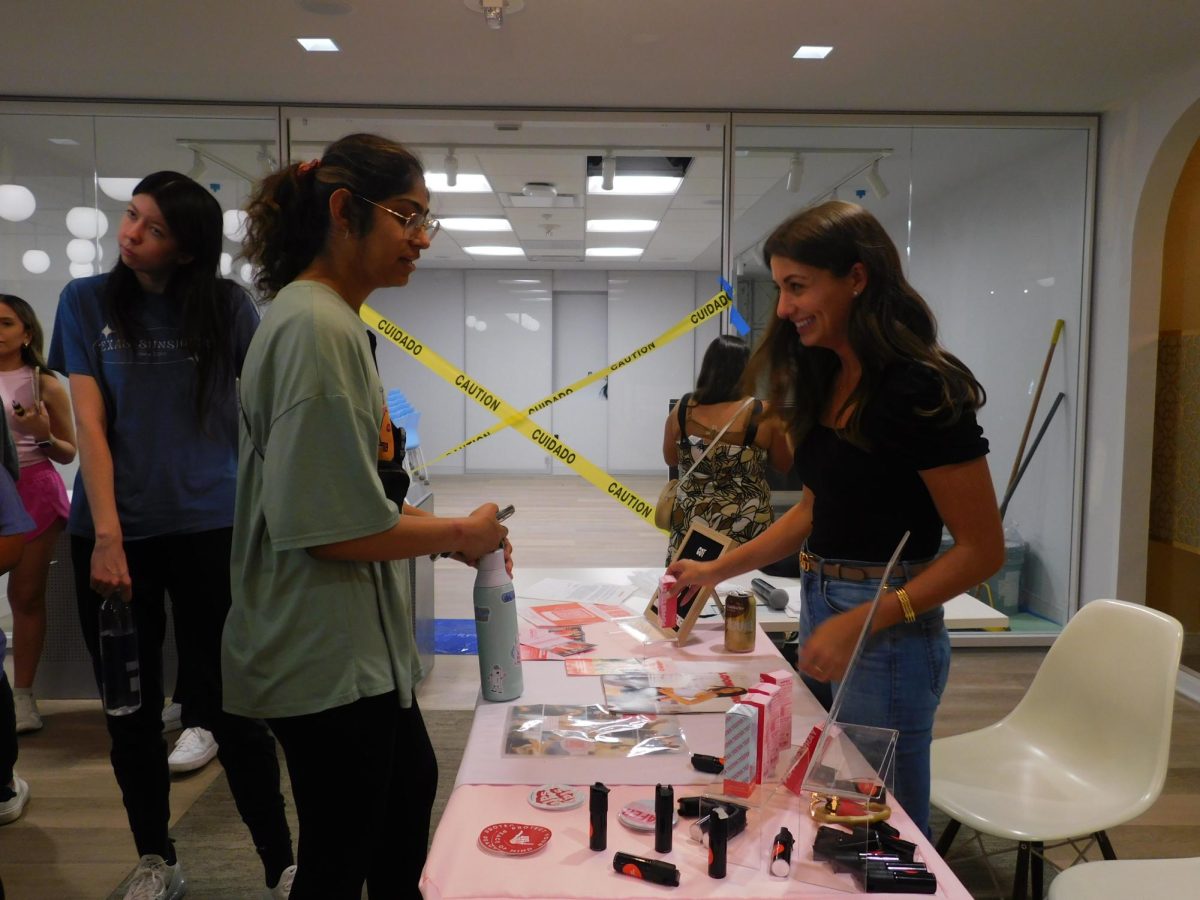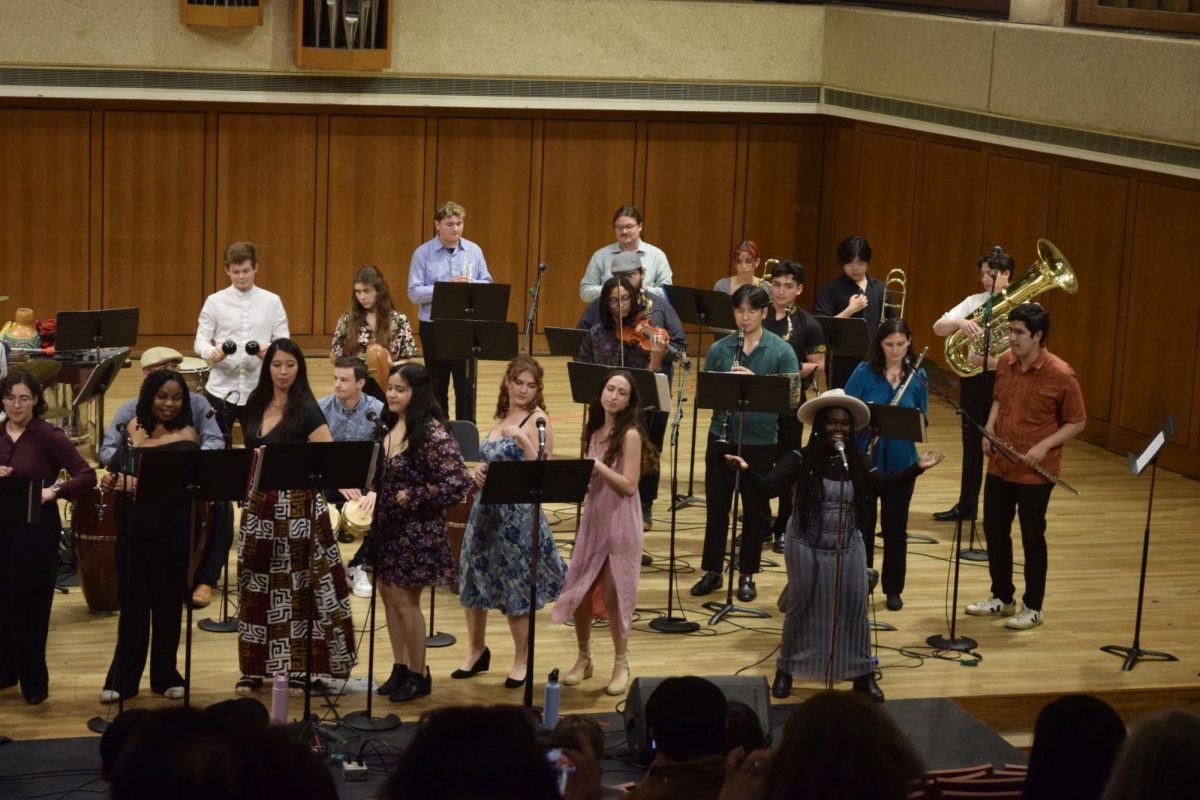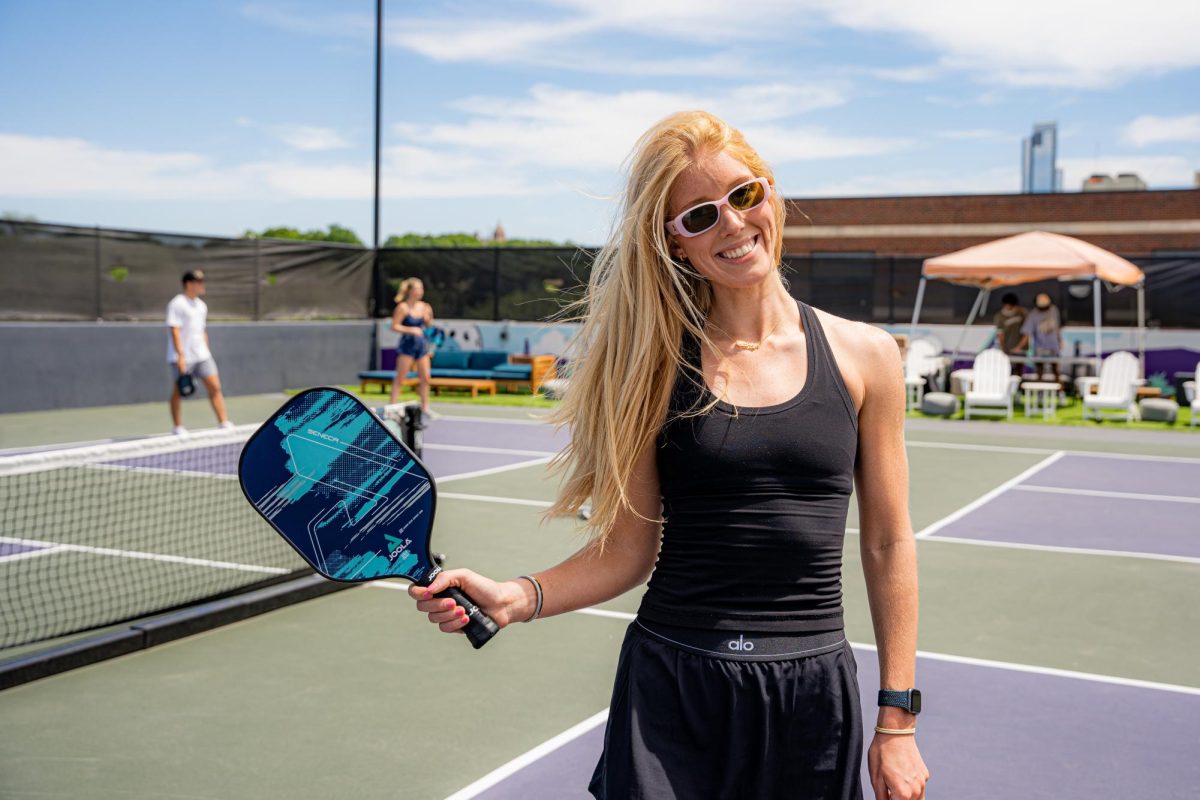Last month, the City Council unanimously voted to pass the bag ban ordinance, which means single-use plastic or paper bags will no longer be offered at retail stores beginning next year. However, many local artists have decided to take a more creative approach by incorporating these recyclable materials into their art — from creating crafts out of recycled water bottles to crocheting with plastic yarn.
Dean Wolf, radio-television-film alumnus of ’96, and his wife Carrie run Wolf Art Glass & Pottery, an online store which sells blown glass art, lighting and pottery created out of recycled materials.
In particular, Wolf likes to work with Topo Chico bottles. Since they are made for machine production (and consequently to cool as quickly as possible), they provide for a more unique medium than the standard blowing “art glass,” which generally has a lower melting temperature and provides a longer work period for the artist.
“My friends and I have been drinking Topo Chico mineral water for years and have always admired the beautiful glass bottles it comes in,” Wolf said. “It was natural for me to try melting these ‘Coke’ colored bottles and see what could be crafted with the recycled glass.”
As glassblowing can often be a highly energy-consumptive art form, the couple is committed to finding ways of reducing their carbon footprint — for instance, they use a single furnace to melt down small batches of glass in a homemade clay crucible, which also allows for experimentation with various types of glasses.
“I find working with bottle glass extremely rewarding, and sometimes frustrating, in the challenge and speed required to manipulate it,” Wolf said. “The more I work with it, the more I find that people are receptive to having decor and lighting made from recycled glass in their homes, and they appreciate the effort we put into keeping its carbon footprint minimal.”
Wolf’s prior career was in coding and web marketing; so implementing Etsy, an online marketplace for handmade and vintage items, as the medium for their sales was a natural choice.
“We have tested other craft/artisan e-commerce platforms but always return our focus to Etsy as they have a proven history and the largest mass of online arts and crafts buyers,” Wolf said.
Cristen Andrews, Austin-based blogger of BagsBeGone.com, is another artist who blogs about her plastic bag crocheting and various other creations, many of which make use of recycled materials. However, for Andrews, crocheting is more of a hobby than anything else. While she sells many of her creations at local craft fairs and shops, she primarily works as a freelance educational writer.
Andrews’s experience in blogging about “plarn,” plastic bag yarn, has led to the recent popularization of the practice. She currently receives daily emails from people around the world wanting to learn how to crochet from plastic bags or telling her about their own projects.
“While I think plastic bags should ultimately be eradicated, I crochet with them because it’s a good method of recycling these bags that would otherwise end up in the streets, landfills or the bellies of animals,” Andrews said. “And I love showing others how they can recycle single-use plastic bags by crocheting them into fashionable, durable, reusable creations.”
Over the past five years, Andrews has taught workshops to inspire others to recycle plastic bags in creative ways, at events like Make Magazine’s Maker Faire in 2007 and various workshops at environmental fairs and farmer’s markets in collaboration with Austin Green Art.
Through a Kickstarter fundraiser and travel grant funded through Hostelling International, Andrews was able to spend the summer of 2010 traveling through Mumbai, Gujarat, Rajasthan and Delhi to spread her ideas of conservation through artistic means.
“I decided that India would be a good location to introduce this idea of crocheting plastic bags,” Andrews said. “I thought that if I work with slum dwellers, teach them to perform basic crochet stitches and create simple bag designs, they could become skilled artisans capable of transforming waste materials into fashionable products.”
However, even taking small steps to reduce wastefulness has proven beneficial for students regardless of artistic prowess. Government senior Shawn Johnson used recycled paint to decorate the walls of his apartment.
“I love the idea of using recyclable material to make something new,” Johnson said. “It’s a really good way to save money and create something cool, especially when you’re making use of the things that you already have lying around your house.”
These creations also introduce a unique way of expressing environmental concerns through a platform not normally associated with these issues.
“I think that art is a fun way to discuss topics like this without getting too confrontational about it,” Andrews said. “And I think the message sticks a lot better with art, too.”





















